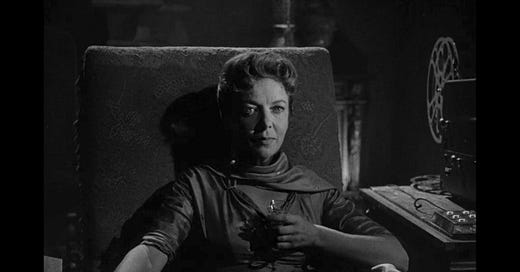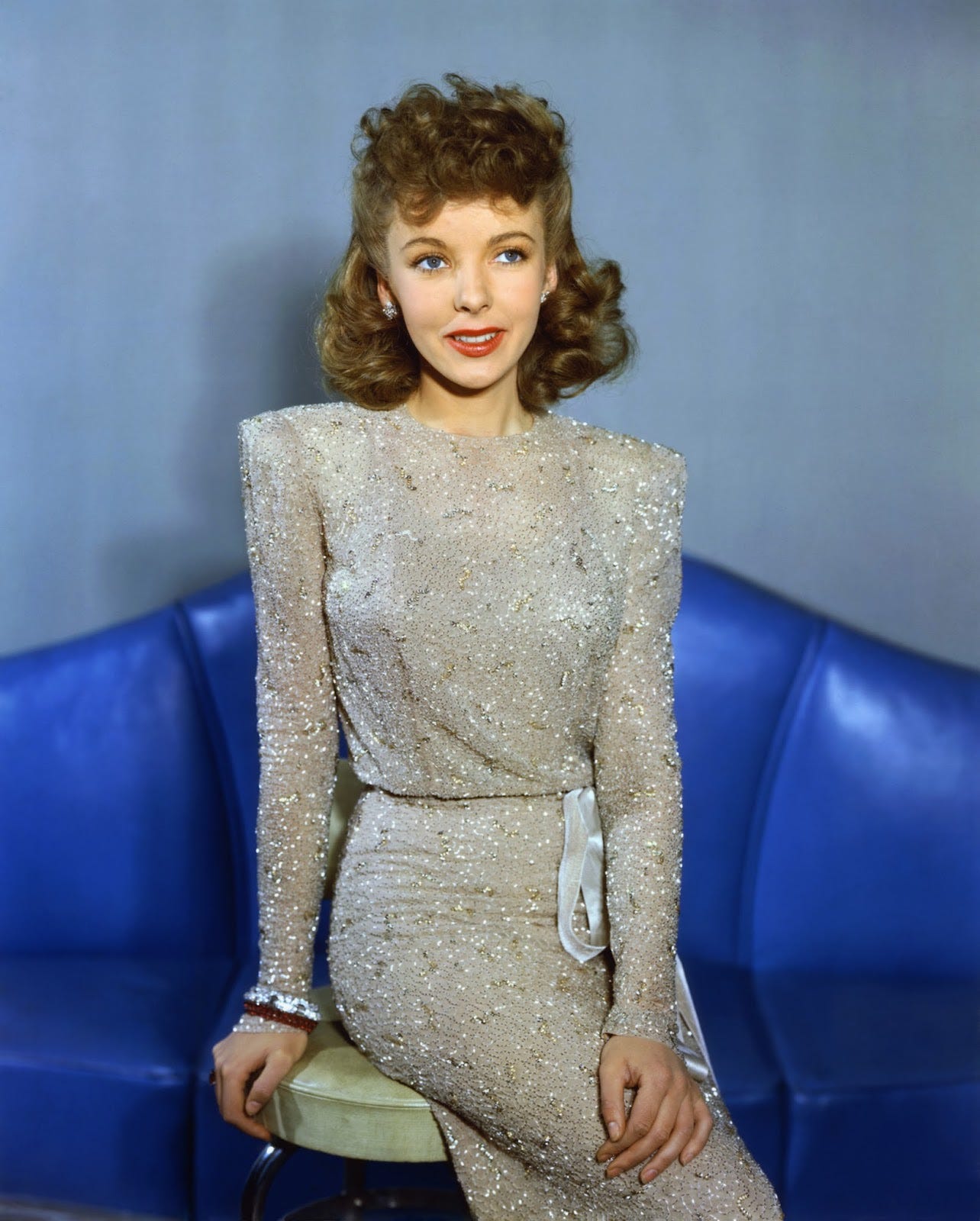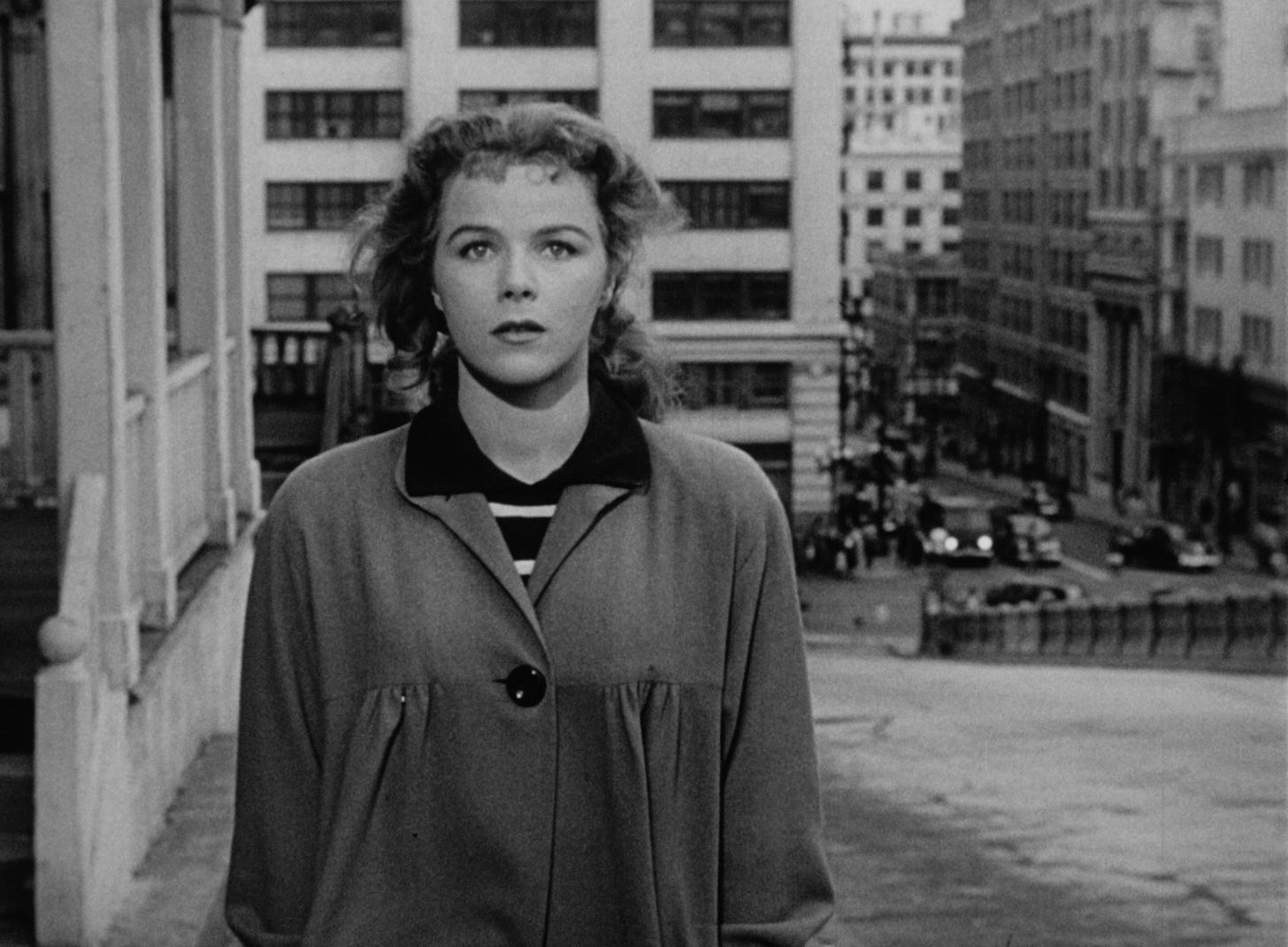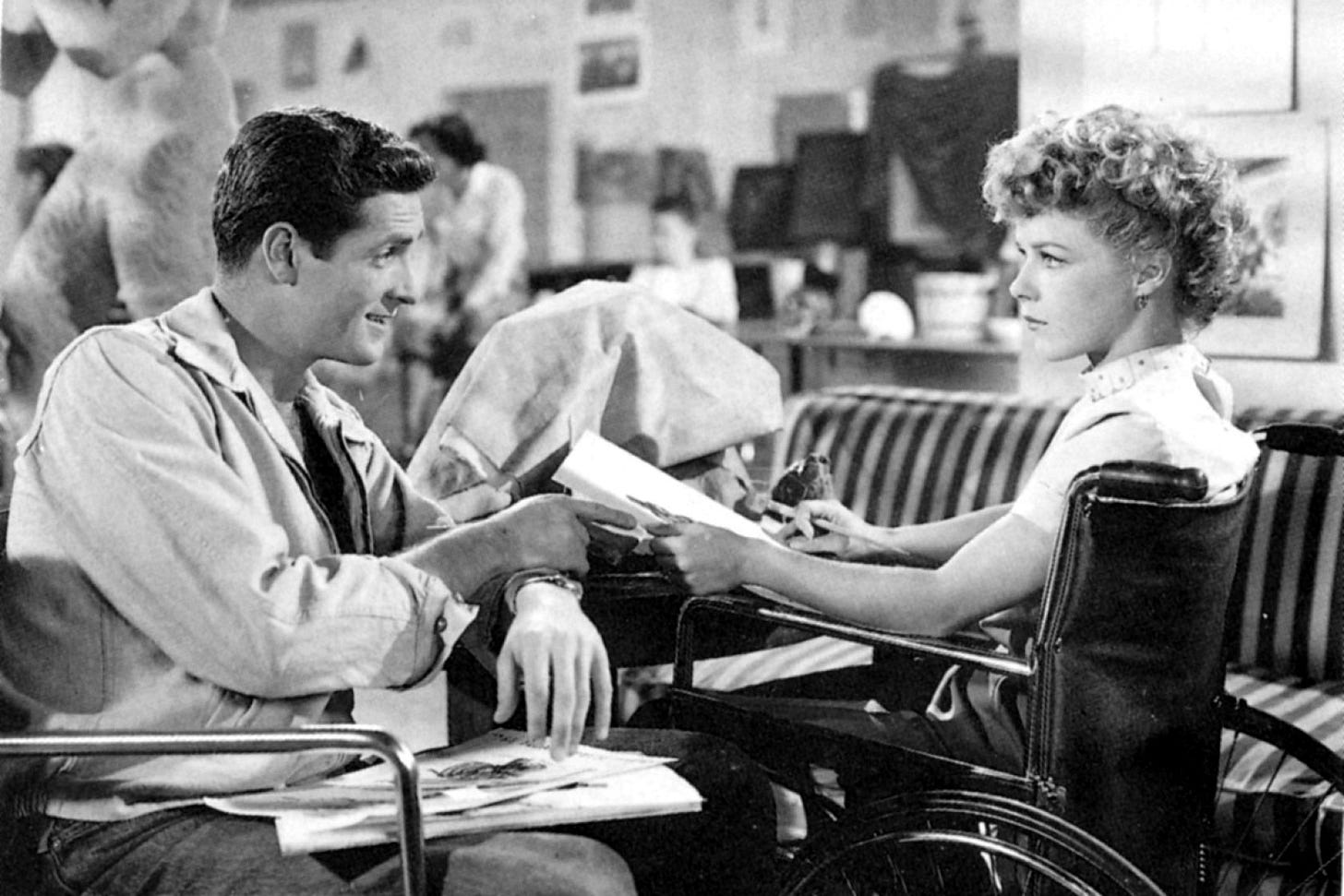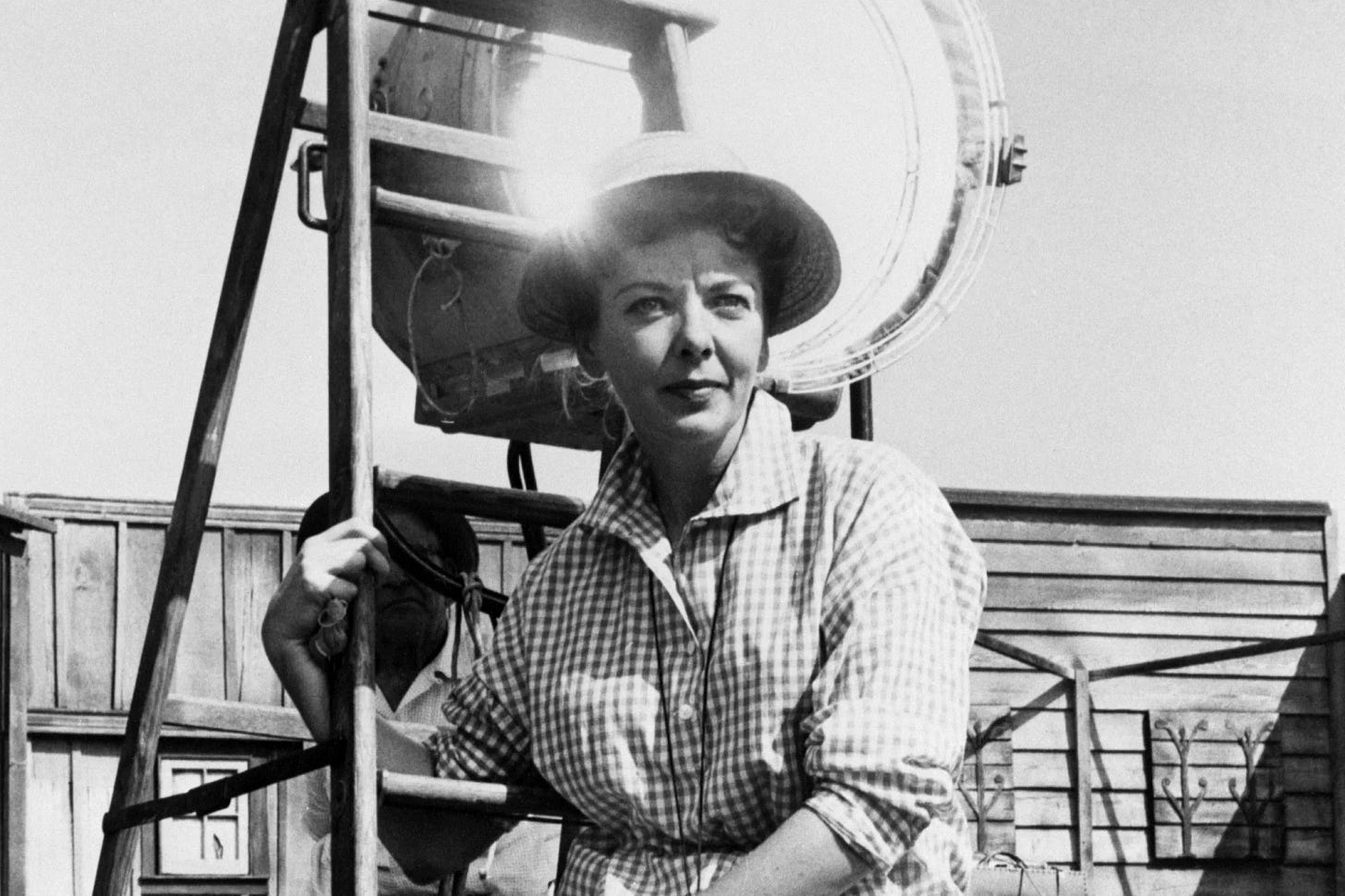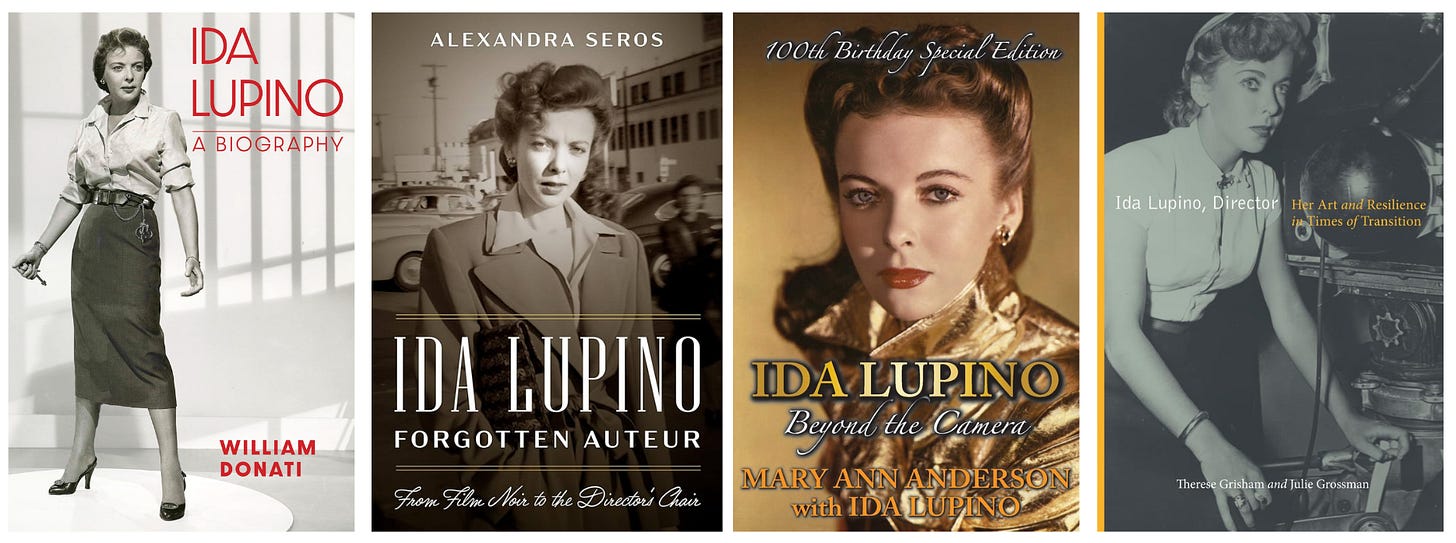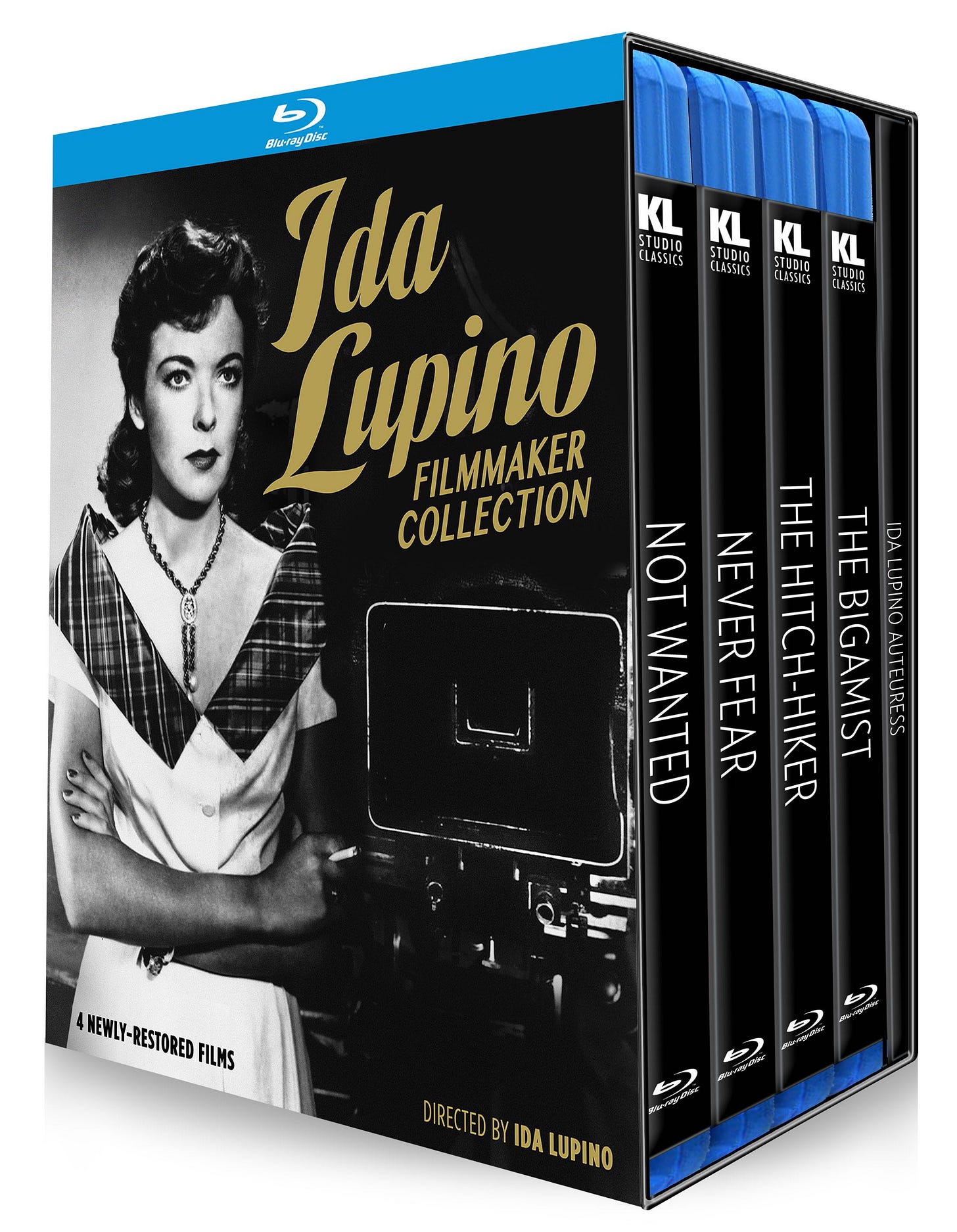A Brief Look at Ida Lupino
She's been called the most talented and versatile woman in the history of movies. Here's why:
Yesterday, I examined director Ida Lupino’s most famous film, The Hitch-Hiker (1953). Although she deserves a more extensive post, I’m only giving a brief overview of her work today. No discussion of women in film can be complete without spending time with Lupino.
I first saw Ida Lupino in “The Sixteen-Millimeter Shrine,” an episode from the first season of The Twilight Zone (1959-1964). The story begins with a retired movie star (Lupino) living in the past, a woman comfortable yet depressed as she looks back at her former films. When I saw the episode in the early ‘80s, I hadn’t seen Sunset Boulevard (1950), so I wouldn’t have realized the similarities to the Billy Wilder masterpiece, but it didn’t matter. What mattered was Lupino’s convincing performance. She was that movie star, unable to return to reality, looking back with regret, with little hope for the future. This was my starting point for Lupino. I had no idea of her importance as an actor, producer, or director.
Lupino, born in England, came from a family of actors. After achieving success as an actress, she became interested in all aspects of filmmaking. With her then-husband, Collier Young, Lupino founded The Filmakers, an independent film company dedicated to creating movies that addressed issues the mainstream studios refused to confront: rape, illegitimate children, bigamy, and polio. Some feminists argued that these films portrayed women as passive, but Lupino demonstrated that her characters did not embrace passivity. They are restless, anxious, traumatized, and displaced, yet strong-willed. Many begin their stories with an unexpected event or tragedy that disrupts their normal lives. These themes often parallel those in classic film noir, including the Lupino-directed noir, The Hitch-Hiker (1953).
Her first film behind the camera, Not Wanted (1949), introduced the groundbreaking idea of an unwed mother (Sally Forrest) as a protagonist. No major studio was willing to make this type of film about a woman in crisis, but Lupino had no reservations about producing it for The Filmakers. Lupino served as co-producer and co-writer for the project until director Elmer Clifton suffered a heart attack just a few days into shooting. Lupino stepped in, uncredited, and completed the film.
Lupino continued to shake things up with Never Fear (1949), the story of a young dancer (Sally Forrest again) stricken with polio. Lupino, a polio victim early in her career, brought an unflinching realism to the film. She also took on another topic no big studio wanted to address: rape (Outrage, 1950). How about shining a light on bigamy? Lupino did, directing and co-starring in The Bigamist (1953) with Edmond O’Brien and Joan Fontaine. Lupino’s 1953 film noir The Hitch-Hiker offers thrills and suspense, but the real story concerns the trauma and instability of a postwar consciousness. The picture also showcases another rarity for the 1950s: positive representations of Latino characters.
Lupino planned several other projects that never materialized: I Bought a Gun, depicting how a handgun kept in a home has a damaging effect on a family, Something for Nothing (a trio of gambling stories), The Story of a Murder (a scientific approach to why people kill), and Fire Bug, about an arsonist. Lupino believed that moviegoers were more interested in a film’s content than the actors starring in it, but changing audience attitudes can be difficult. When she realized The Filmakers wasn’t turning a profit, Lupino had no choice but to align herself with RKO Pictures. That decision meant dealing with Howard Hughes, which she didn’t want to do, yet during her time at RKO, she made Outrage, the sports melodrama Hard, Fast, and Beautiful (1951), and The Bigamist.
Lupino continued both her acting and directing careers in film and television, directing over 100 episodes for shows including Alfred Hitchcock Presents, Gilligan’s Island, The Rifleman, The Fugitive, Bewitched, The Twilight Zone, Have Gun – Will Travel, and many more.
Eddie Muller has often called Lupino the “most talented and versatile woman in the history of movies.” He’s right. I’ve only scratched the surface of Ida Lupino’s career here, so I hope you will explore her work and read more about her.
The best introduction to her directorial career, Ida Lupino Filmmaker Collection, is currently out of print, but you can find all these films (except for The Bigamist, which is currently streaming on Amazon Prime) on individual Blu-rays from Kino Lorber. Let’s hope that box set gets a reissue sometime soon.
The rest of Lupino’s work is too lengthy to list here, but you can discover the films she appeared in and the television episodes she directed here. I hope you’ll make watching at least one of Lupino’s films a goal for 2025. You won’t regret it.

